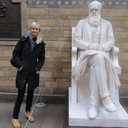MR Imaging of Brachial Plexus and Limb-Girdle Muscles in Patients with Amyotrophic Lateral Sclerosis.
Từ khóa
trừu tượng
OBJECTIVE
To assess brachial plexus magnetic resonance (MR) imaging features and limb-girdle muscle abnormalities as signs of muscle denervation in patients with amyotrophic lateral sclerosis (ALS).
METHODS
This study was approved by the local ethical committees on human studies, and written informed consent was obtained from all subjects before enrollment. By using an optimized protocol of brachial plexus MR imaging, brachial plexus and limb-girdle muscle abnormalities were evaluated in 23 patients with ALS and clinical and neurophysiologically active involvement of the upper limbs and were compared with MR images in 12 age-matched healthy individuals. Nerve root and limb-girdle muscle abnormalities were visually evaluated by two experienced observers. A region of interest-based analysis was performed to measure nerve root volume and T2 signal intensity. Measures obtained at visual inspection were analyzed by using the Wald χ(2) test. Mean T2 signal intensity and volume values of the regions of interest were compared between groups by using a hierarchical linear model, accounting for the repeated measurement design.
RESULTS
The level of interrater agreement was very strong (κ = 0.77-1). T2 hyperintensity and volume alterations of C5, C6, and C7 nerve roots were observed in patients with ALS (P < .001 to .03). Increased T2 signal intensity of nerve roots was associated with faster disease progression (upper-limb Medical Research Council scale progression rate, r = 0.40; 95% confidence interval: 0.001, 0.73). Limb-girdle muscle alterations (ie, T2 signal intensity alteration, edema, atrophy) and fat infiltration also were found, in particular, in the supraspinatus muscle, showing more frequent T2 signal intensity alterations and edema (P = .01) relative to the subscapularis and infraspinatus muscles.
CONCLUSIONS
Increased T2 signal intensity and volume of brachial nerve roots do not exclude a diagnosis of ALS and suggest involvement of the peripheral nervous system in the ALS pathogenetic cascade. MR imaging of the peripheral nervous system and the limb-girdle muscle may be useful for monitoring the evolution of ALS and distinguishing patients with ALS from those with inflammatory neuropathy, respectively.



